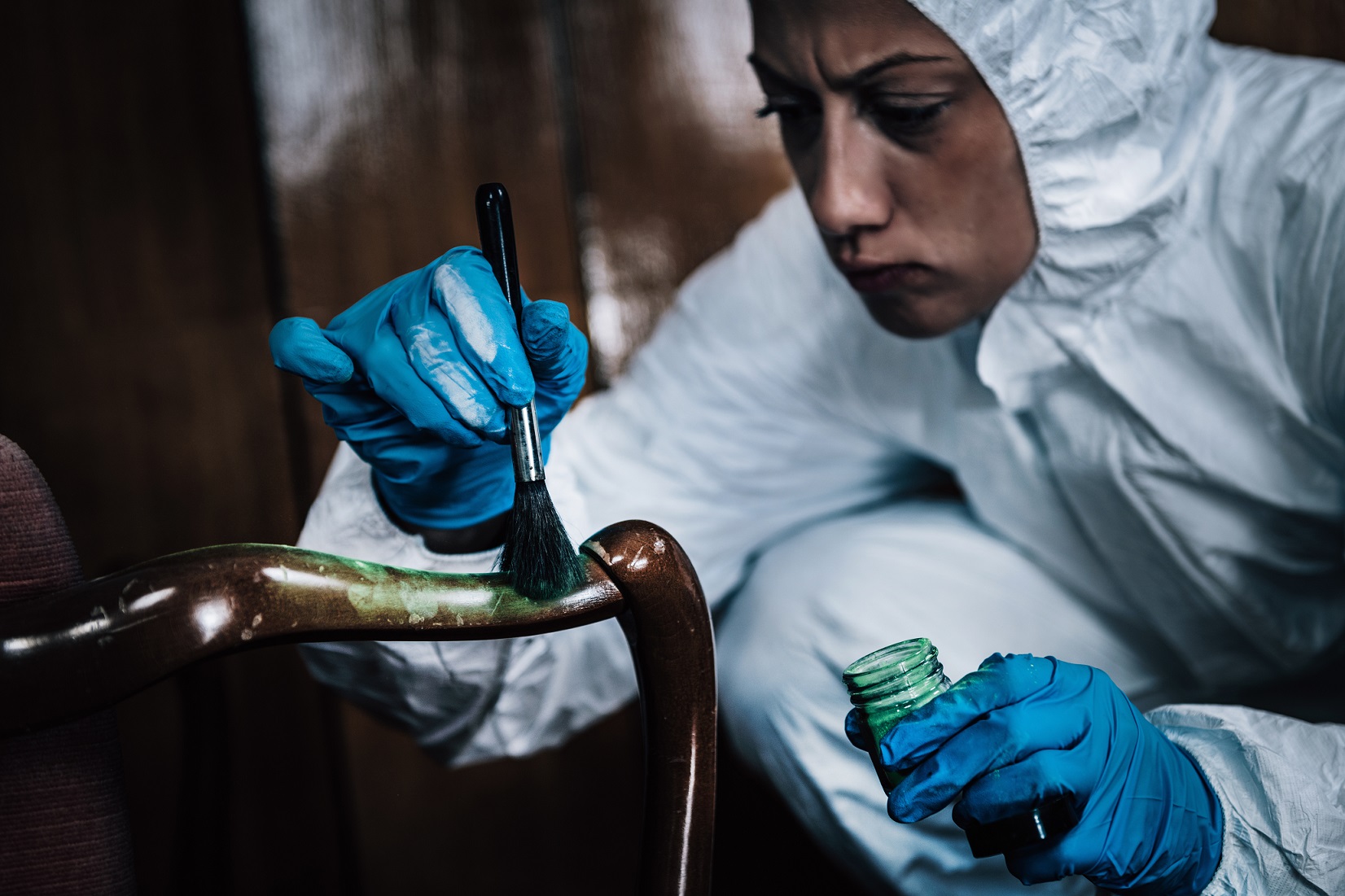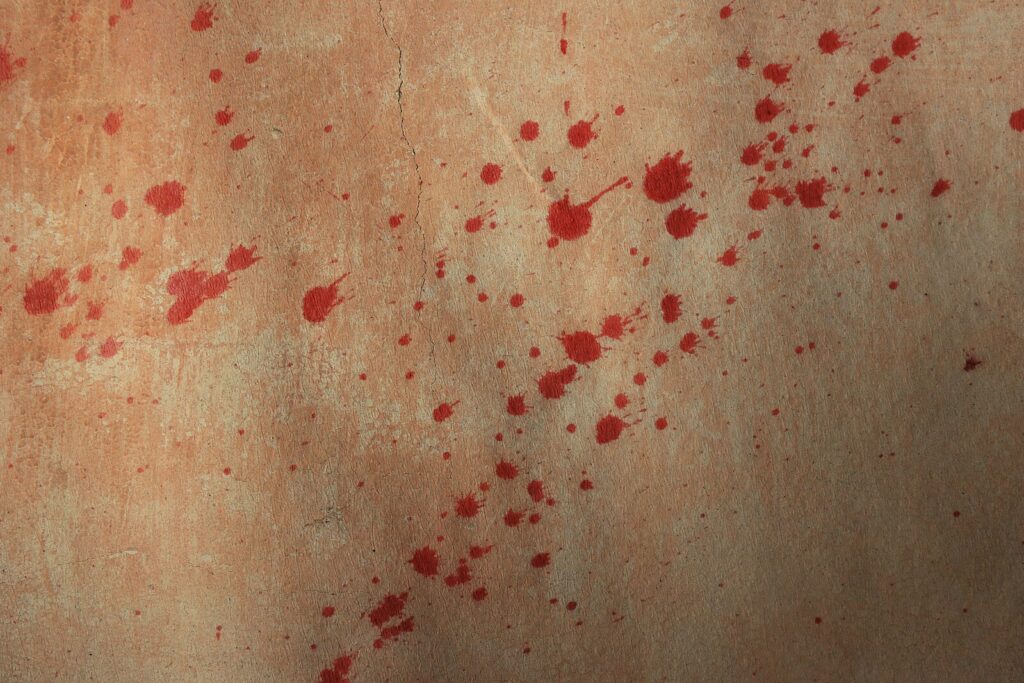Now Reading: Trace Evidence in Forensic Science
-
01
Trace Evidence in Forensic Science

Trace Evidence in Forensic Science
Introduction:
In a criminal investigation, evidence appears before the investigating agencies and courts in various forms. The success and failure of a case investigator are based on the ability to recognize, collect and use evidence in the investigation. Evidence can be present in the crime scene in many forms. It can be testimonial evidence or physical evidence. Physical evidence is any material or object which is present on the crime scene no matter whether it is microscopic or macroscopic. So the variety of physical evidence that may be encountered at the scene of a crime is infinite. It can range from as large as building to as small as a hair strand, DNA, dust, etc. The physical evidence which is small in size or microscopic is known as trace evidence. So, trace evidence is a term that encompasses all small pieces of material that are collected from crime scenes and assists in the investigation of these incidents.[1,2] Trace evidence is also known as “Silent Witness” because it has the potential to tell what actually was happened and who has been involved.[3] Typically, trace evidence includes hair, fibre, bloodstains, paint, glass pieces, dust, skin, feathers, insects, body fluids, gunshot residue, etc. As this evidence is microscopic in nature it can be easily transferred between objects and person and thus they have special significance in the criminal investigation. [4] It can be used to investigate every type of crime from a terrorist attack to theft.
The key behind the existence of trace evidence is Locard’s principle of exchange which is the basis for all forensic science as we know it today. Sir Edmond Locard said that “It is impossible for a criminal to act, especially considering the intensity of a crime, without leaving traces of this presence. [5] In the other words, Locard believed that whenever two objects come into contact with one another, there is always a transfer of material across the contact boundaries. Further the Paul Kirk added to that no criminal can perpetrate a crime without leaving evidence behind or taking evidence away. Small items like pollens, plant material, soil, dust or other microscopic debris may be left by the person or picked up from contact with the environment or another individual. Therefore it is quite impossible to come in contact with the environment without leaving traces to it. If this trace evidence is properly located, recovered, preserved and submitted for examination, they can provide a valuable information investigation of the incident which enables to link between the crime scene, suspect and victim.[1]
Significance of Trace Evidence:
Although the trace evidence is small in size it has great significance plays in crime scene investigation because of the following reasons:
- As trace evidence is small in size, they often remain unnoticed by the culprit and the other person present at the crime scene. So there is more chance that this evidence remains undestroyed and undisturbed on the crime scene.
- Also, they are exchanged almost in all types of crimes.
- Trace evidence can be identified and matched with the possible source of their origin with much accuracy like any other clue material.
- It helps to reconstruct a sequence of event, to determine the modus operandi and also the place of occurrence of crime.
- It may provide information about the suspects and can link a suspect with the incident.
How Trace evidence is formed:
Trace evidence is formed when a small piece of material breaks or detaches from one surface and transfers to another surface during physical contact. The amount of material that transfers from one surface to another depends upon:
- Properties of both the surfaces and the shed ability of material.
- The amount of force applied its duration and surface area of the physical contact.
- The size and properties of the transferred materials.
- The time elapsed, post-transfer activities of culprits and victims.
- Condition of transferred materials after the transfer.[6]
Types of Trace Evidence:
Trace evidence involves all the type of chemical, physical, and biological entities with their small size or amount. They can be organic, inorganic substances, plant materials or animal and sub-life materials. Although types of materials that might be found on the crime scene are used as trace evidence are nearly unlimited, hairs, fibres, plant materials, paint, glass, GSR, blood stains and soil are the most common types analysed in the laboratory. However, the nature and composition of evidence may vary from one case to another case.
Hairs are useful as trace evidence as they originate directly from the body and are associated with the victim, witness or suspects. Hair samples can provide vital information by comparing the questioned hair samples found on the crime scene with known samples collected later from animals or persons suspected of leaving the hair. It also helps in the individualization of a person if hair roots are available.[7,1] Like other trace evidence, fibres are useful in the investigation process as the origin of fibres can be identified. Fibres are thread-like elements from fabric or textile materials. Fibre evidence can be considered as circumstantial evidence and strengthen any additional circumstantial or solid evidence against a culprit.[8]
A wide variety of plant material may prove to be a useful source of trace evidence. Plant materials such as wood, bark, flowers, petals, leaves, seeds, plant hair, fibres, sawdust, etc. may indicate specific location and time. It also shows when and where a person has been moving out. Since these materials are light in weight they easily get transferred on clothing, shoes, weapons, and vehicles involved. Like plant material soil is usually associated with most of the crimes involving outdoor activities, but sometimes may also be found in the indoor crime scene. Soil may link the culprit, the victim, the crime scene, the vehicle, the weapon of offence and the other personal items involved in the crime scene. Sometimes, shoe prints, footprint and tyre marks may also carry the soil belonging to some specific area. This may help in identifying a specific location.
Glass can be used to gather other trace evidence, that is for collecting fingerprints or blood from a broken window; however, glass itself falls in the of trace evidence.[4] Broken glass fragments can be very small and might be found on the roadside in hit and run case that may offer a clue that confirms the identity of a suspected vehicle or glass pieces may be found on the cloth of an alleged assailant, where a bottle is used as weapons. It has an advantage that they remain stable for a longer time and don’t degrade like biological evidence. Glass fragments are frequently encountered in crimes which involve accidents and burglaries. [9]
GSR is fine debris that is expelled from the firearm when a round of ammunition is discharged.[10] In a forensic investigation, analysis of GSR revealed a wide range of issue from the identification of shooter to relating a bullet with a wound. It also helps in reconstructing a crime involving a firearm. [11] Paint evidence is found in the majority of hit-and-run cases. Paint as a piece of evidence may also be present in other types of crimes like burglary and homicide cases.[12] A vehicle often leaves paint smear and chips upon impact and the burglary tools can have paint smears from contact with the painted surface during burglaries.[13] So the analysis of paint sample can identify the vehicle in accident cases, also provide a lead in burglary cases.
Collection of Trace Evidence:
Various methods are used for detection of trace evidence. These methods include general visual searches, visual searches along with the different types of light sources, such as oblique lighting and alternate light sources (UV, laser, high intensity), and visual searches along with magnifying glass. Methods used for the recovery and collection of trace evidence are mostly direct and least intrusive. Following are the collection techniques used for trace evidence:
- Picking: Trace evidence like hair, fibre can be picked up by using a clean forceps.
- Lifting: In this method, an adhesive bearing substrate such as tape is used for the collection of micro traces like dust, pollens, etc.
- Scrapping: This method is used to collect traces like bloodstains, paint chips, etc. A flat object such as clean spatula is used to dislodge traces from an object and then transfer to collecting surface.
- Vacuum Sweeping: In some cases, vacuum cleaner along with the filter trap is used to recover trace evidence from an item or area.
- Clipping: Trace evidence present in fingernail can be recovered from clipping. Clean clippers or scissors are used to clip fingernails.
- Combing: Sometimes clean comb or brush is used to recover trace evidence from the hair of an individual.[14]
Analysis of trace Evidence:
Analysis of the trace is a challenging task because of small size and its quantity. The analysis of such type of evidence depends upon their nature and composition and varies from case to case. Varieties of analytical techniques are used by a forensic analyst to examine, locate, and classify trace evidence, and further to identify their main components, and ultimately compare these materials to other evidence samples to identify a common source. Trace evidence examinations involve a combination of both microscopic and instrumental analyses to evaluate the properties of a given sample fully and determine its significance to the crime.
- Microscopy: Microscope is the most common and important technique to examine the trace evidence many tiny particles can best be identified based on certain morphological features. Wood fibres, non-woody botanical fibres, lyocell fibres and rayon, etc. all have nearly the same chemical composition, yet it is possible to distinguish each of these group from one another and within a group to identify the individual member on the basis of their microscopic characteristics. Amorphous or crystalline transparent particle and man made fibres such as glass minerals, various chemical crystals and drugs can be identified when encountered as a single small particle, based on their optical properties. Different types of microscopes are used for the analysis of different traces. For example, polarized light microscopy is useful for the identification of man-made fibres; scanning electron microscope is capable of analysing the gunshot residue based on morphological and chemical composition.
- Chemical analysis: It is a useful technique that can be performed in the process of inorganic or organic for the metallic particles. Mostly the gunshot residue is analysed by using a different chemical test.
- X-ray spectroscopy: This method can be extremely useful for the elemental analysis of traces especially in the paint, construction material, dust and dirt. The elemental composition of a tiny particle can be obtained within a second with the help of this technique. By utilizing this method both the inorganic and organic particles can be analysed with equal capacities.
- IR-Microspectroscopy: This method is useful to determine the molecular composition of small particle which is inorganic in nature. Traces like synthetic fibres, paint, drug and plastic etc. can be analysed by using these techniques. This technique consists of a Fourier Transformed Infrared Spectrophotometer attached to a reflecting microscope.[1]
Conclusion:
Trace evidence encompasses anything that can be touched, broken, transferred, shed and left behind during a crime if a piece of it, no matter how small, can be found during the investigation. Trace evidence can be used to investigate any type of crime. Trace evidence plays an important role in the investigation as it provides a vital link between the suspect, scene of crime and victim. The value of trace evidence depends on the condition of evidence and what can learn from its analysis and how it is used in the investigation.
References:
1. Maithil, B. P. (2012). Physical Evidence in Criminal Investigation and Trials. Delhi: Selective and Scientific Books.
2. Benedette Cuffari, M. (2020). How is Trace Evidence Analyzed in Forensic Cases?. Retrieved 12 December 2020, from https://www.news-medical.net/life-sciences/How-is-Trace-Evidence-Analyzed-in-Forensic-Cases.aspx
3. The end of the (forensic science) world as we know it? The example of trace evidence | Philosophical Transactions of the Royal Society B: Biological Sciences. (2020). Retrieved 12 December 2020, from https://royalsocietypublishing.org/doi/10.1098/rstb.2014.0260
4. Trace Evidence: Introduction. (2020). Retrieved 12 December 2020, from http://www.forensicsciencesimplified.org/trace/
5. Garden, H., HowStuffWorks, Science, Science, & Science. (2020). How Locard’s Exchange Principle Works. Retrieved 12 December 2020, from https://science.howstuffworks.com/locards-exchange-principle2.htm
6. Practice Support – Trace Evidence – A Primer for Lawyers. (2020). Retrieved 12 December 2020, from https://v1.lawgazette.com.sg/2015-07/1343.htm
7. (2020). In Chapter 13Trace Evidence in the RealCrime LaboratoryRichard E. Bisbing, BS.
8. Fibre Evidence. (2020). Retrieved 12 December 2020, from https://www.officer.com/home/article/10249215/fiber-evidence
9. Glass Analysis for Forensic Trace Evidence // Cellmark. (2020). Retrieved 12 December 2020, from https://www.cellmarkforensics.co.uk/services/forensic-casework/glass/
10. Gun Shot Residue Investigation For Forensics // Cellmark. (2020). Retrieved 12 December 2020, from https://www.cellmarkforensics.co.uk/services/forensic-casework/gsr/
11. Chang, K., Jayaprakash, P., Yew, C., & Abdullah, A. (2013). Gunshot residue analysis and its evidential values: a review. Australian Journal Of Forensic Sciences, 45(1), 3-23. doi: 10.1080/00450618.2012.691546
12. (2020). Retrieved 12 December 2020, from https://oag.ca.gov/sites/all/files/agweb/pdfs/cci/reference/peb_5.pdf
13. Importance of Paint Trace Evidence – 836 Words | 123 Help Me. (2020). Retrieved 12 December 2020, from https://www.123helpme.com/essay/Importance-of-Paint-Trace-Evidence-223268
14. (2020). Retrieved 12 December 2020, from https://www.nist.gov/system/files/documents/2016/09/22/trace_evidence_recovery_guidelines.pdf








